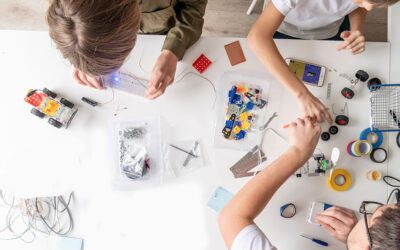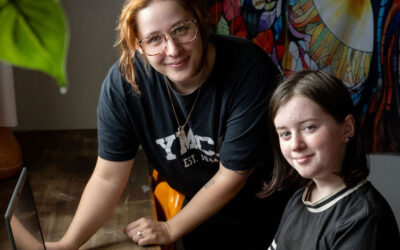Wriggly kids exist. If this is your child, you know that getting them to sit still in a chair at a desk for prolonged periods is challenging for them and frustrating for you. But all is not lost!
For a start, children of preschool and primary school age find it almost impossible to sit still. You might have noticed your child wiggling and jiggling and jumping or tapping at home, in the car, when you’re sitting at a café, even at the movies. There are plenty of parents, myself included, who have uttered through gritted teeth, “Would you just sit still!” at their child.
When a child can’t sit still in class or pay attention, appears to be disorganised and unable to focus, or acts out in unfamiliar ways, a lot of parents want to put a label on it. That label is usually ADHD, or attention deficit hyperactivity disorder. While this might be the case for some children, it certainly doesn’t define them all.
It turns out, there’s a reason for all this movement. Not only is it par for the course in their development, but research suggests sitting still can negatively effect your child’s learning.
Back in 2019, parenting educator, former teacher and author Michael Grose told Kidspot that “little kids aren’t designed for sitting for long periods of time”. He says movement is an important part of their brain development.
How movement helps learning
In short, movement helps the brain to work. When we move it increases the blood flow and oxygen to our brain, which in turns helps it perform better. Additionally, chemicals are released that help with focus, memory, motivation and mood. All of these things are integral to how we learn.
Adding exercise and movement throughout the school day makes students less fidgety and more focused on learning. According to a study published in the Journal of Physical Activity and Health, children who are more physically active are consistently performing above their peers. This includes cognitive function, academic behaviour and their overall grades.
In preschool and primary school aged children, movement assists learning because it engages more of the brain in the learning process. This allows children to not only learn more productively, but retain more information. Further, active play and physical activity is good for kids’ mental health.
Movement at school
Movement doesn’t have to be going for a run or playing a game of touch football. It can be as simple as moving from one space to another in the classroom. Children can also spend time outside during lessons; use movement and music to develop hand-eye coordination, catching and rhythm; and engage with sensory paths in and around the school that encourage running, jumping, skipping and hopping.
For example, a number of early childhood educators and Prep and Year 1 teachers start the day with exercise. At my oldest child’s school I’ve seen them engage in short circuits involving jumping, running and stretching. During and between lessons short movement or stretching helps refocus the children on learning.
Teaching lessons as active games or incorporating activities that involve all the senses are also useful for enhancing attention and memory.
Incorporating movement can be incredibly beneficial for children who might have additional needs.
Reshaping our perceptions
Of course, there will be times where children will need to stay sitting. This can be for safety or to be respectful. But overall, if we want children to learn, we must be prepared to let them move.
Parents can model movement and activity as a means of learning at home. My children will often ask for a ‘dance party’ in the hour before dinner. For my oldest child, it provides a nice reprieve from sight words and maths activities. More often than not I’m happy to get out from behind the computer desk and boogie with them. Moving, learning and having fun, who doesn’t want that for our kids?
This article is of a general nature and FYI only, because it doesn’t take into account your personal health requirements or existing medical conditions. That means it’s not personalised health advice and shouldn’t be relied upon as if it is. Before making a health-related decision, you should work out if the info is appropriate for your situation and get professional medical advice.
You might also like…


